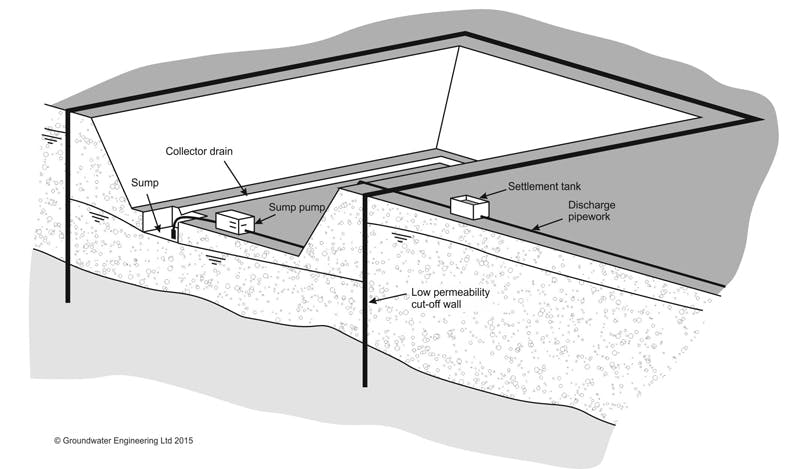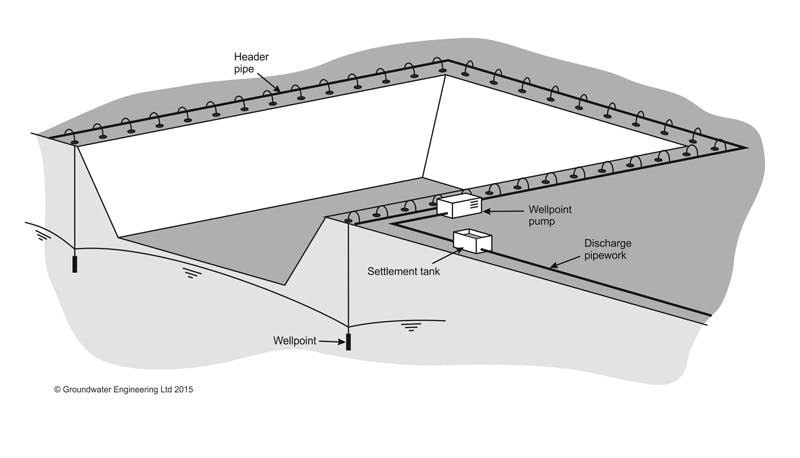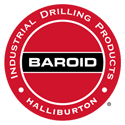What is the Best Dewatering Method?
2 February 2014A wide range of techniques can be used to control groundwater during excavation. Selecting the right method and dewatering technology is an important step in many construction and mining projects. Each project and set of ground conditions are unique and must be assessed individually, but some generic guidance can be given based on the capabilities of each method.
It is also important to make sure the groundwater control method is selected to try and reduce the impacts on groundwater resources and the wider groundwater regime. This will be discussed in a future blog.
Groundwater control methods are classified into two main types: exclusion or pumping.
Groundwater Control by Exclusion
Groundwater pumping can be reduced or avoided by installing an impermeable physical cut-off wall to exclude groundwater from the excavation. If an impermeable stratum exists at shallow depth beneath the excavation then the cut-off wall can penetrate down to that stratum to create a full cut-off.

Several different geotechnical methods can be used to form cut-off walls:
- Steel sheet piles
- Diaphragm walls and secant pile walls
- Slurry walls and trenches
- Grout curtains (including jet grouting)
- Freeze walls (produced by artificial ground freezing)
- Compressed air (for tunnels and shafts).
Some of the cut-off wall methods are temporary; for example the groundwater will thaw out when artificial ground freezing is discontinued, or steel sheet-piles can be extracted at the end of the job. These temporary methods should not have a significant effect on groundwater conditions at the site once the project is completed. However, methods which permanently affect soil permeability (for example grouting) can permanently alter groundwater flow regimes at a site – it is essential that the potential impact of this is assessed at design stage.
Even when a cut-off wall is used some pumping will be required to cope with:
- Groundwater trapped within the cut-off area
- Rainfall and precipitation
- Seepage through the wall and through the ground.
Groundwater control by exclusion is widely used in situations when there is a risk of external impacts (e.g. nearby structures or detrimental effects on other water users) caused by groundwater lowering. An exclusion system can, if carried out effectively and if ground conditions are favourable, minimize any groundwater lowering outside the dewatered site area.
Groundwater Control by Pumping
Groundwater control by pumping involves pumping groundwater from an array of wells or sumps with the aim of temporarily lowering groundwater levels to allow excavation to be carried out in dry and stable conditions. Groundwater control by pumping is also known as Groundwater Lowering, Construction Dewatering or simply Dewatering.

There are four principal dewatering pumping techniques. These techniques are not readily interchangeable. Each technique has a relatively narrow range of application relative to two key parameters: the drawdown required and soil permeability.
The main dewatering techniques are:
Sump pumping
The sump pumping method allows the groundwater to seep into the excavation, where it is collected in sumps (special pits within the working area) and pumped away by robust solids-handling pumps. This method is applicable to relatively shallow excavations.
Wellpoints
The wellpointing method uses lines or rings of closely spaced shallow wells (wellpoints) installed around the excavation. The wellpoints are connected to a headerpipe and pumped by wellpoint pumps which can handle both air and water. The system operates on the suction principle, so drawdown by this method is limited to 5 or 6 m below the level of the wellpoint pump. If deeper drawdown is required than wellpoints may have to be installed in multiple stages.
Deepwells
The deepwell method uses bored well pumped by electric submersible pumps to lower the groundwater level below the excavation. Wells are normally installed at relatively wide centres around the outside perimeter of the excavation. Wells are sometimes installed within the excavation itself. The method is well suited to relatively deep excavations where large drawdowns are required.
Eductor wells
The eductor well method (also known as ejector wells) is a specialist dewatering method used to control pore water pressures in low permeability materials such as silts or fissured clays. The method operates on the venturi principle, whereby circulation of high pressure water through eductors in the base of each well creates a vacuum which promotes drainage of low permeability strata.
For more information download Groundwater Engineering’s Technology Data Sheet on Construction Dewatering.
Blog
Dewatering for Basement Construction
12 March 2016Groundwater can be a significant problem when excavating for basement construction. This blog discusses the available techniques that can be used to dewater during basement construction.
Read More




